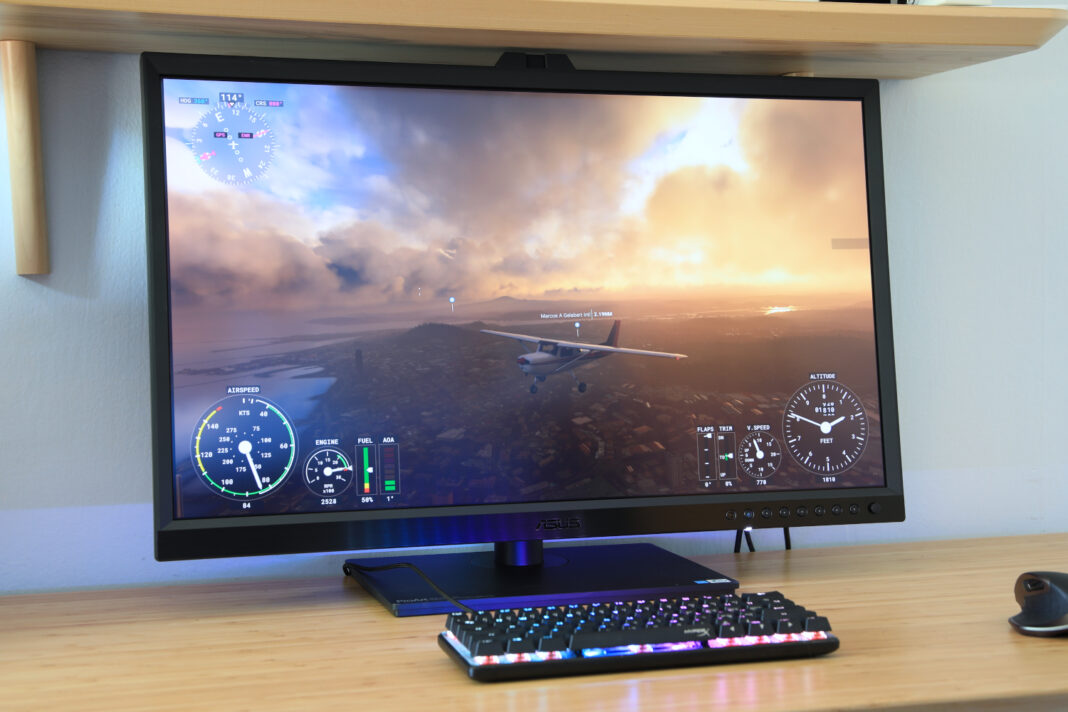テクノロジー

Image: Matt Smith
Video editors know how to put a monitor to the test. They need a monitor with great color accuracy, a healthy color gamut, 4K resolution and, preferably, HDR. Very few monitors meet all these requirements, and fewer still do so at a competitive price—but a handful stand out from the crowd. These are the best monitors for video editing.
To learn about what to look for in a monitor for video editing, scroll below our recommendations.
For even more monitor recommendations, check out our roundup of the best monitors across all categories.
1. Asus ProArt OLED PA32DC – Best monitor for video editing
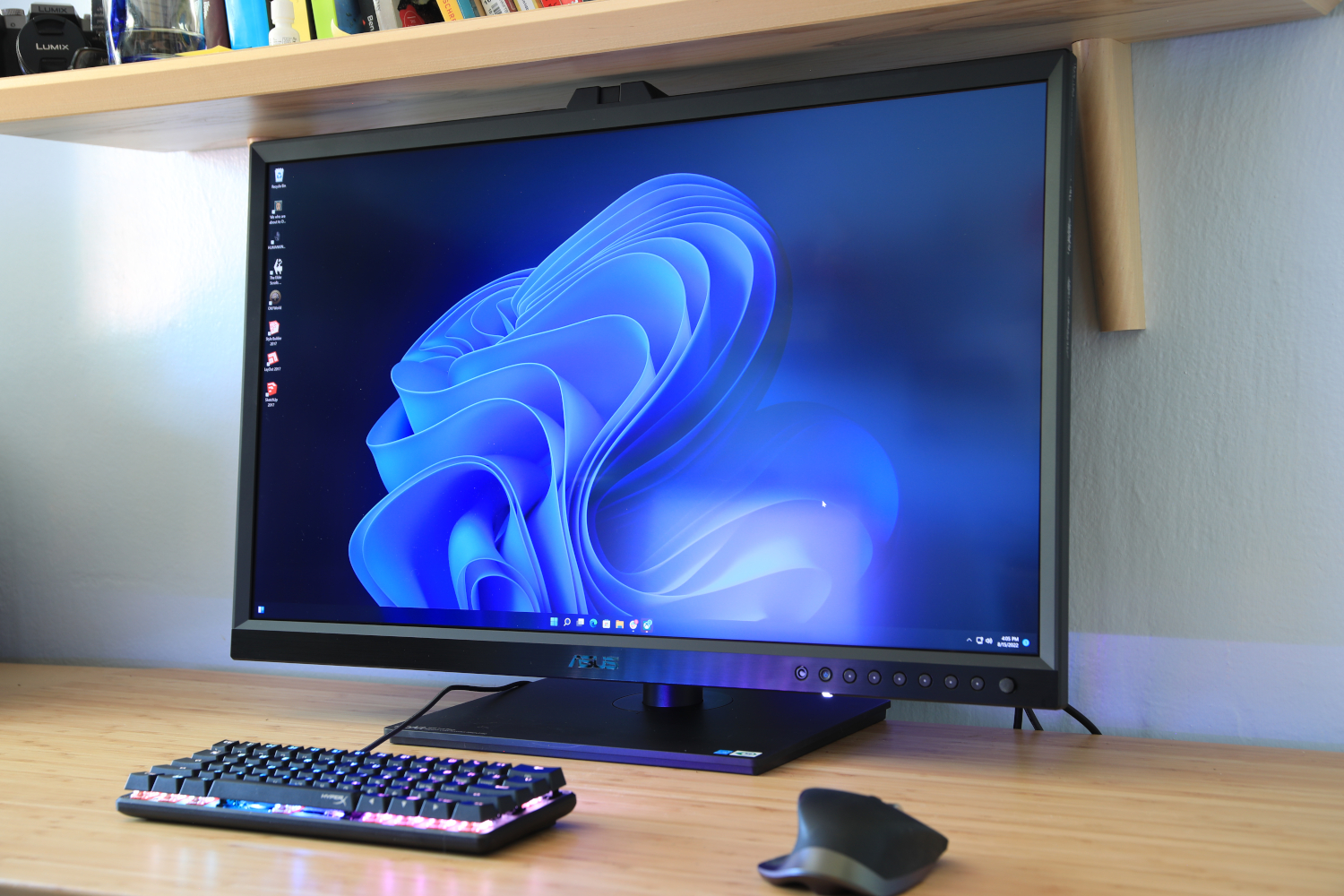
Pros
-
The best SDR image quality yet
-
Good HDR performance
-
Long list of image quality features
-
Exceptionally sturdy
-
Numerous inputs, plus USB hub
Cons
-
HDR brightness could be better
-
Glare can be an issue in bright rooms
-
Only 60Hz, no adaptive sync
Asus’ ProArt PA32DC is best in class if you need a top-tier monitor for video editing. It will set you back $3,499—and it’s worth every penny
This monitor has a 32-inch 4K OLED panel that delivers super-sharp video, excellent color accuracy, and covers a wide range of professional color gamuts including Rec.2020 and DCI-P3. The OLED panel also has superior contrast and looks great in HDR, which is good news if you need to edit HDR content. No other monitor on this list comes close to matching the PA32DC’s HDR quality.
The ProArt PA32DC’s professional focus is obvious from its design. It’s extremely sturdy and includes a built-in handle. The height-adjustable stand can be detached and replaced with a pair of screw-on legs that collapse flat. These features might seem odd for a 32-inch monitor but are great if your work requires that you travel to a client’s worksite or assist filmmakers on-set.
It also packs plenty of connectivity including a total of five video inputs. One is a USB-C port with DisplayPort Alternate Mode and 65 watts of Power Delivery for charging connected devices. The on-screen menu system is extensive and offers a buffet of image-quality customization. The monitor even has a built-in colorimeter to assist with calibration.
Read our full
Review Asus ProArt OLED PA32DC
2. Dell U3223QE – Best 4K monitor for video editing
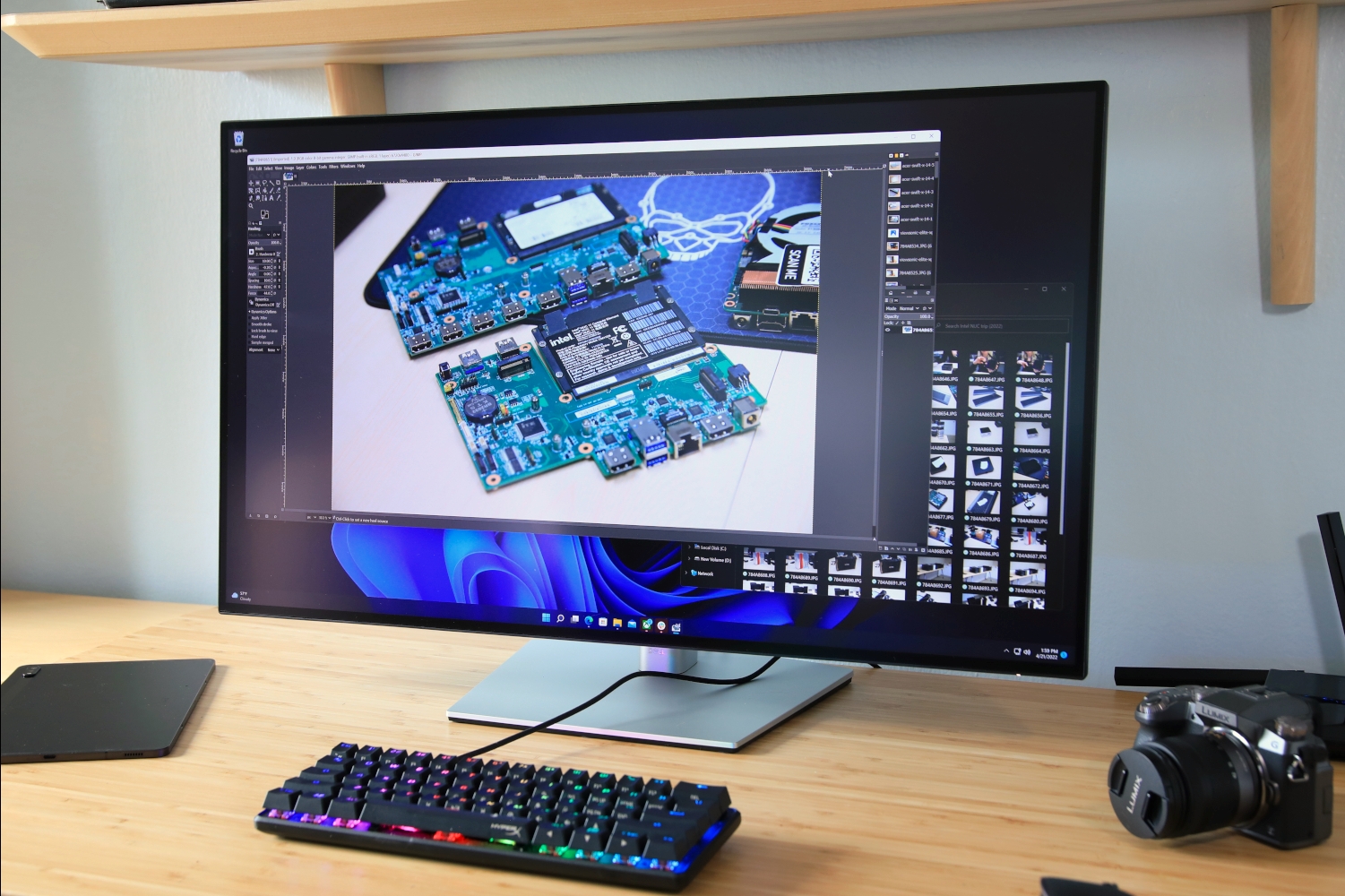
Pros
-
IPS Black panel fulfills its promise
-
Accurate color with wide gamut
-
High brightness in SDR
-
USB-C hub with 90 watts of power
Cons
-
USB-C hub lacks video-out or ethernet
-
HDR is merely passable
The Dell U3223QE is a 32-inch monitor with 4K resolution and an IPS Black display panel. This panel, which is found in just a handful of monitors, has an improved contrast ratio when compared to older IPS panels. The result is a better sense of realism and dimensionality. The monitor also has a wide color gamut, great color accuracy, and a high maximum brightness.
HDR is supported and looks acceptable, though the Dell U3223QE is significantly behind the more expensive Asus ProArt PA32DC. However, alternative monitors in the sub-$1,000 bracket aren’t any better.
Connectivity is excellent. The monitor has a USB-C port with 95 watts of Power Delivery and DisplayPort Alternate Mode. It also drives a USB-C hub that expands connectivity to multiple USB-A ports, ethernet, and DisplayPort-out.
Video editors who want a smaller monitor should consider the 27-inch Dell U2723QE. It packs nearly identical features for a couple hundred dollars less than the U3223QE.
Read our full
Review Dell U3223QE
3. Asus ProArt PA348CGV – Best ultrawide for video editing
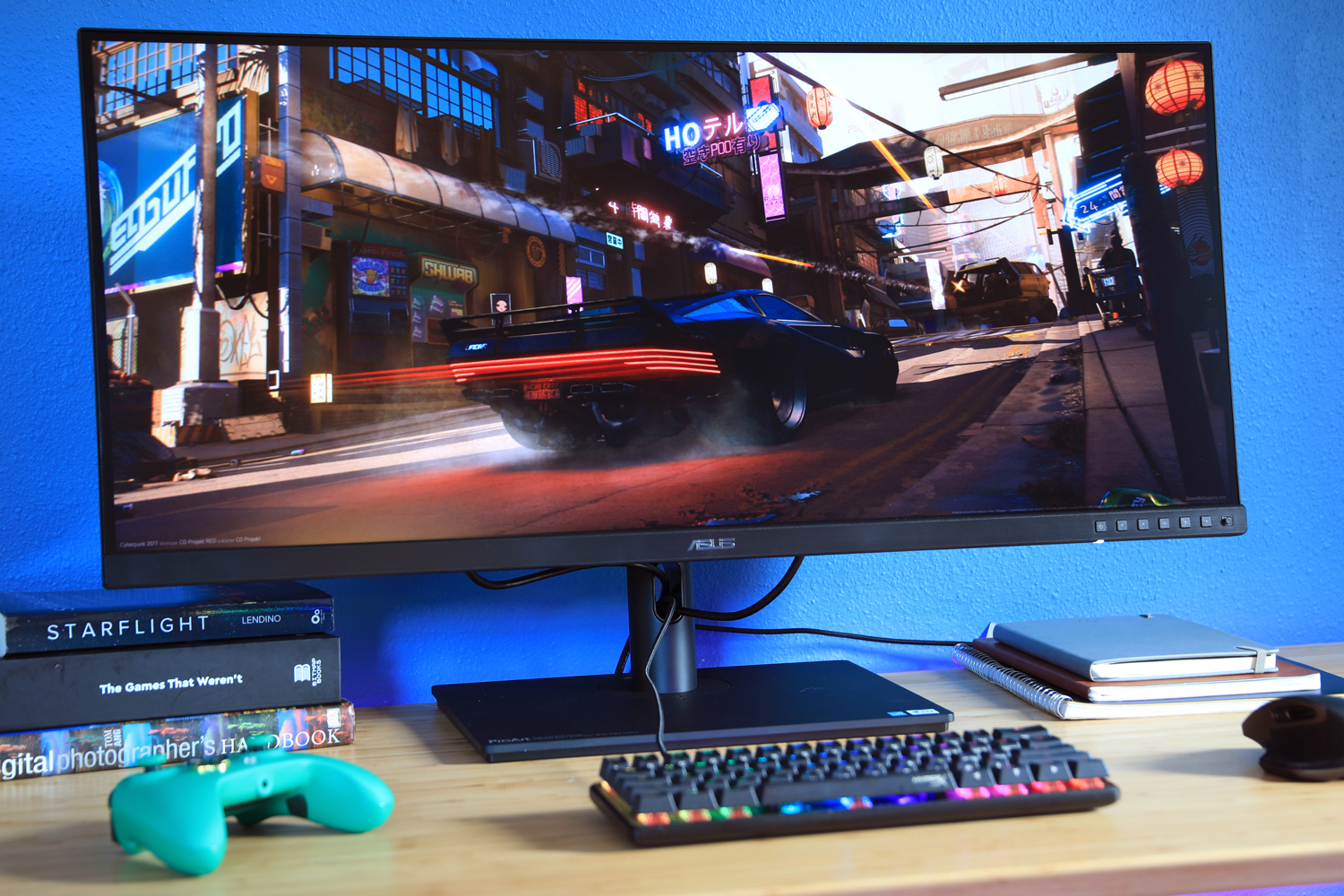
Pros
-
Excellent SDR image quality
-
Sturdy, hefty design
-
Wide range of customization
-
120Hz refresh rate
Cons
-
USB-C hub lacks video-out or ethernet
-
HDR is merely passable
Asus’ ProArt PA348CGV is a versatile ultrawide monitor that’s great for video editing—and many other tasks.
This monitor has a 34-inch ultrawide panel with 3440×1440 resolution. The resolution might be an issue for video editors who need to work in 4K, but very few ultrawide monitors offer a higher resolution than this. Video editors will appreciate the ultrawide screen’s improved multitasking and ability to show more of a video timeline at once.
The ProArt PA348CGV’s default color accuracy is superior to all other monitors on this list, despite its reasonable price, and it supports up to 98 percent of the DCI-P3 color gamut. This monitor has a standard IPS panel, so its contrast ratio doesn’t live up to the Dell U3223QE, but it otherwise goes toe-to-toe with Dell’s premium 4K monitor. HDR support is a bit better than the Dell, ranking it among the best you’ll find below $1,000.
Asus sweetens the deal with a wide range of features. The monitor has a USB-C port that can deliver up to 95 watts of Power Delivery for charging a connected laptop or tablet. It also supports a refresh rate of up to 120Hz and AMD FreeSync Premium Pro, which makes this a proper PC gaming monitor.
The Asus ProArt PA348CGV retails at an MSRP of $749.99, undercutting alternative ultrawide monitors with similar performance and features. Its versatility and pricing make it perfect for video editors who work from a home office.
Read our full
Review Asus ProArt PA348CGV
4. Asus ProArt PA279CV – Best budget monitor for video editing
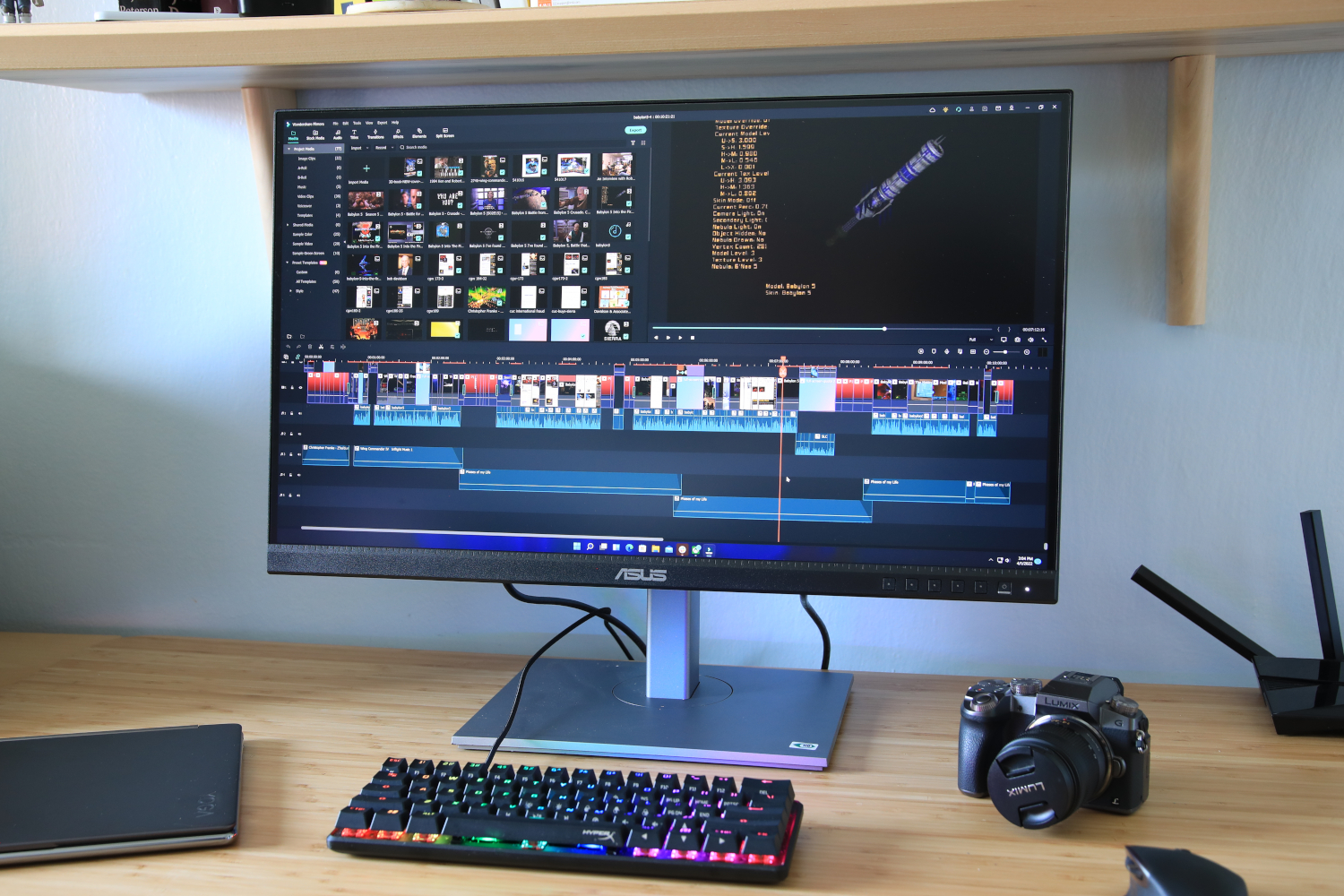
Pros
-
Accurate image
-
High maximum brightness
-
Menu settings allow calibration
-
Has USB-C with 65 watts Power Delivery
-
Competitive price
Cons
-
Unimpressive design
-
Luminance uniformity could be better
-
HDR is bright but otherwise falls short
Asus’ current ProArt line is leagues ahead of most competitors, and that remains true even when shopping on a budget.
This is a 27-inch 4K monitor with an IPS panel. The monitor’s contrast ratio, color accuracy, and maximum brightness all rival more expensive monitors on this list. Owners can easily tweak the monitor’s image quality with its extensive on-screen menu options. Its out-of-box image quality is not far behind the Dell U3223QE despite the large difference in price.
So, what’s the catch? This monitor is not a wide color gamut monitor, meaning it displays only 86 percent of the DCI-P3 color gamut—however, it handles the entire sRGB color gamut. The monitor’s HDR support is mediocre, too, though that’s to be expected given its price.
The ProArt PA279CV has a USB-C port with DisplayPort Alternate Mode and 65 watts of Power Delivery for charging a connected device. The USB-C port also acts as a hub that extends connectivity to four additional USB-A ports. Asus throws in adaptive-sync support for smooth gameplay, though the monitor doesn’t support a refresh rate above 60Hz.
Asus prices this monitor competitively at $449.99. The Asus PA279CV stands out from other affordable alternatives because of its color accuracy, image customization options, and USB-C support.
Read our full
Review Asus ProArt PA279CV
What to look for in a monitor for video editing
Video editors, like most people, will enjoy a monitor with excellent image quality—but most video editors have specific and demanding needs. Video editing can demand great color accuracy, 4K resolution, and support for HDR, among other features. Here’s what to look for in a video editing monitor.
Great color accuracy is a must-have
Color accuracy is a key benchmark for video editing. Video editors are responsible for ensuring a video looks right when viewed on a wide variety of displays and that its presentation fits the style the project demands. It’s hard to judge this, however, when working on a monitor with inaccurate color. High color accuracy is necessary for a video editor to guarantee the final cut looks right.
Thankfully, all the monitors on this list provide superb color accuracy. They back it up with a wide range of on-screen menu options that allow color and general image-quality customization. This helps a video editor dial in the monitor’s color accuracy and eliminate any small errors they notice.
4K is the standard
4K resolution is the gold standard for video editing among an extremely broad range of video editing projects, from Hollywood films to YouTube videos. Most video editors will rarely need to support a resolution beyond 4K.
It’s technically possible to edit a video for 4K on a monitor with sub-4K resolution. This is especially true of less “traditional” content, such as video created for YouTube or social media. Still, 4K is preferable since it offers a 1:1 representation of the final cut.
Great HDR is ideal, but hard to find
High Dynamic Range (HDR) video is now rather common. Many devices, from smartphones to laptops and televisions, can display HDR content. That makes HDR alluring for video editors. Unfortunately, great HDR monitors are hard to find, and the best are very expensive.
All the monitors on this list can support HDR, which technically means it’s possible to use them for HDR video editing. Odds are you’ll have no problem editing HDR video for less-demanding platforms, like YouTube and social media, on any monitor listed here. However, the pricey Asus ProArt PA32DC is the only monitor on this list that holds up if you need to guarantee brilliant, accurate HDR results.
USB-C is a handy perk
USB-C has evolved into an excellent connection option that’s well suited to video editing. A single USB-C port can handle both Power Delivery and DisplayPort Alternate Mode. A monitor with a USB-C port that supports these features effectively doubles as a USB-C. hub, reducing clutter on a desk. It’s ideal for video editors who often use a USB-C compatible laptop to travel to, and edit at, remote worksites.
All the monitors on this list have a USB-C port with Power Delivery and DisplayPort Alternate Mode, though the amount of power and number of downstream ports varies. Dell’s U3223QE is the standout choice for connectivity, as it offers ethernet and DisplayPort-out in addition to multiple USB-A ports.
How we test monitors
PCWorld’s monitor reviews are written by staff and freelance writers. Monitors are tested with the SpyderXElite color calibration tool to objectively measure brightness, contrast, color gamut, and color accuracy, among other metrics. Objective measurements let us directly compare dozens of monitors at once.
Our testing also accounts for special features that may give a monitor an advantage. A USB-C hub with extensive connectivity and Power Delivery is always preferable. We also like to see ergonomic stands, numerous video inputs, a wide range of on-screen menu options, and HDR support.
FAQ
1.
What makes a monitor good for video editing?
A great video editing monitor should have 4K resolution, good color accuracy, a high maximum brightness, an acceptable contrast ratio, and at least support the full sRGB color gamut. Premium video editing monitors should throw in a wide color gamut, excellent connectivity, superior contrast, and HDR.
2.
What is the best resolution for video editing?
4K is the standard. Nearly all video editors will work with 4K content at some point, and many work in 4K exclusively. It’s rare to work with a resolution above 4K, even in professional Hollywood and streaming workflows, though it does occur.
3.
Do I need HDR for video editing?
That depends on whether you’ll edit projects that need HDR.
Creators working on YouTube and other online platforms can easily make the choice to ditch HDR: most viewers won’t notice.
If you’re video editor with clients who need content for HDR, however, then you’ll need a monitor that can properly display it.
4.
Is an ultrawide monitor good for video editing?
Ultrawide monitors can be great for video editing, but they’re not universally better than a widescreen display.
Going ultrawide is helpful if you work on hefty video edits with lots of extra content thrown into the timeline. They can also be preferable when editing a project in an ultrawide aspect ratio.
Most ultrawide monitors don’t support 4K resolution, however, which might be an obstacle. Ultrawide is also an awkward fit for widescreen content and especially bad for portrait video: a rare situation, perhaps, but one that’s becoming more common as TikTok and YouTube Shorts gain popularity.
Author: Matthew S. Smith
Matthew S. Smith is a freelance technology journalist with 15 years of experience reviewing consumer electronics. In addition to PCWorld, his work can be found on Wired, Ars Technica, Digital Trends, Reviewed, IGN, and Lifewire. Matthew also covers AI and the metaverse for IEEE Spectrum and runs Computer Gaming Yesterday, a YouTube channel devoted to PC gaming history.

